The History Of ‘Northern Buddhists’ of Sarvastivada
Part 4
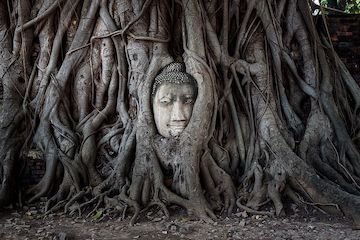
In the previous two posts we looked at the first four Buddhist councils that were held in a time-span of around 500 years after the Buddha’s pari-Nirvana. Now we’ll be looking at the general history of the early Buddhist schools according to the texts of the Sarvastivada school of the ‘Northern Buddhists.’
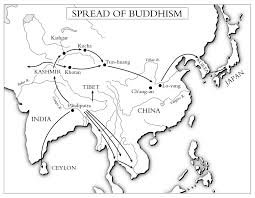
Vasumitra’s account of the early Buddhist schools, as recorded in his text called the Samaya-bhedoparacanacakra, who was a senior Sarvastivada monk in the first century A.D. Along with two other elders of the same school, Bhavya and Vinitadeva, he refers to the previously discussed ‘Mahadeva’s five points’ as being the real reason why the Sangha split into two schools at the Second Council: the Mahasamghika and Sthaviravada.
The two original divisions — Mahasamghika and Sthaviravada
Vasumitra mentions that, on account of the differences (of opinion) among the four groups of people in discussing the five points of Mahadeva, the Buddhist Sangha was divided into two schools: the Mahasamghika, and the Sthaviravada. The four groups of monks that were present at the Second Council were: 1. the Naga group, 2. the border country (pratyantika) group, 3. the learned (Bahusrutiya) group, and 4. the venerable (Sthavira) group.
The names of the various schools and sub-schools are given as Vasumitra mentioned them, and the Theravada equivalent name in Pali is included within parentheses (except for the Lokottaravada school, who doesn’t seem to have an equivalent name given in the Theravada text of the Kathavattu).
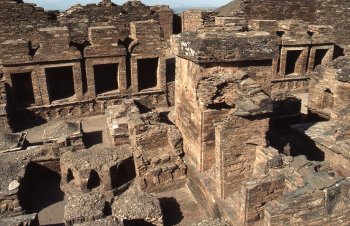
The divisions of the Mahasamghika school
Immediately afterward, during the second century after the death of the Buddha, three schools arose out of the Mahasamghika:
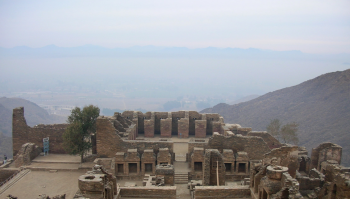
Later on, again, during the second century, another school, issued from the Mahasamghika:
Once again, immediately after that, during this second century, another school issued from the Mahasamghika:
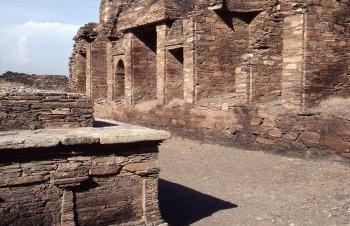
Towards the close of this second century (after the Buddha’s pari-Nirvana), there was an unorthodox priest [in the eyes of Vasumitra] who returned to the correct teachings, (i.e., Buddhism) discarding his heretical views. His name was Mahadeva as well. After becoming a monk and receiving full ordination in the Mahasamghika order, he became well-versed and diligent. He dwelt on the Caitya hill and discussed in detail with the monks of his school, the five points (of the first Mahadeva), after which, on account of disagreements, the school was split up into three schools:
In summary, the Mahasamghika school was divided four or five times (if you include the first schism). Including the root and the branch schools separately, it counts as nine schools:
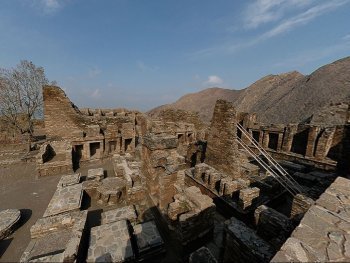
Mahasamghika (Mahasanghikas), Ekavyavaharika (Ekabboharikas), Lokottaravada, Kaukkutika (Gokulikas), Bahusrutiya (Bahulikas), Prajnaptivada (Pannattivadins), Caityasaila (Cetiyavadins), Aparasaila (Aparaseliyas), and Uttarasaila [ = Purvasaila] (Pubbaseliyas).
According to Vasumitra, the Sthaviravada branch remained in harmony for some time, but at the beginning of the third century (after the death of the Buddha) there was a disagreement in the Sangha, and it split up into two schools:
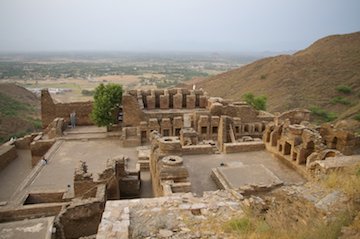
Subsequently during the third century, one school issued from the Sarvastivada:
Immediately afterwards, during this third century, four schools originated from the Vatsiputriya:
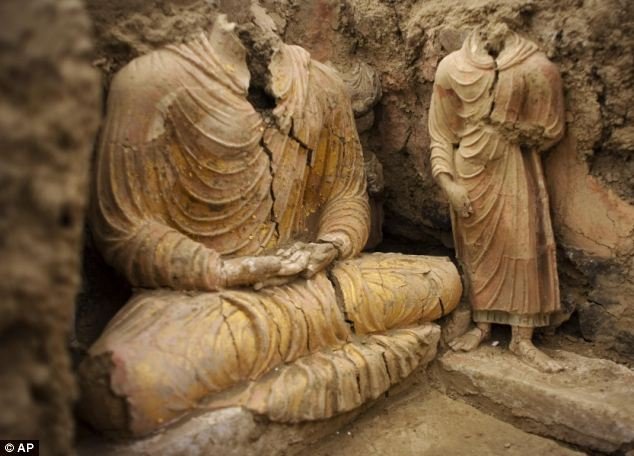
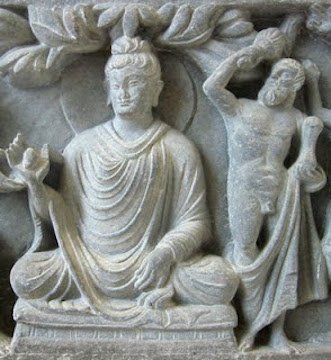
Immediately afterwards, during this third century, another school issued from the Sarvastivada:
Immediately afterwards, during the same century, one school issued from the Mahisasaka:
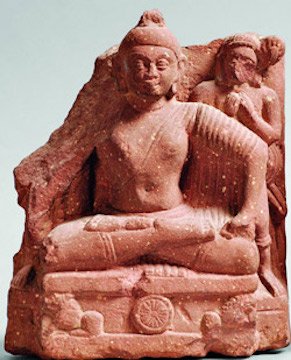
At the end of the third century one school seceded from the Sarvastivada:
At the beginning of the fourth century (after Buddha’s Pari-Nirvana), one school originated from the Sarvastivada:
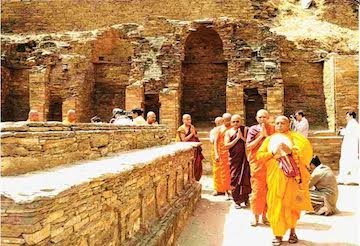
In summary, the Sthaviravada school was divided seven times or eight times (if you include the first schism). Including the root and the branch schools separately, it counts as eleven schools:
Sarvastivada (Sabbatthivadins) [aka Hetuvada], the original (mula) Sthaviravada [aka Haimavata (Hemavatikas)], Vatsiputriya (Vajjiputtakas), Dharmottariya (Dhammuttariyas), Bhadrayaniya (Bhadrayanikas), Sammatiya (Sammitiyas), Channagirika (Channagarikas), Mahisasaka (Mahimsasakas) [the early Mahimsasakas], Dharmaguptika (Dhammaguttikas), Kasyapiya (Kassapikas) [aka Suvarsaka], and Sautrantika [aka Samkrantika] (Sankantikas).
The traditional number of 18 early schools that is usually mentioned by the Theravada school, but this does not entirely match the 20 early schools that Vasumitra lists. Especially the omission of the Lokottaravada in the Theravada account is puzzling.
In the next article, the general history of Buddhist schools according to the ‘Southern Buddhists’ of the Theravada school will be discussed.

Pictures From-Cross-Cultural Influences in the Early Buddhist Art of Ladakh
Pictures From-PAKISTAN - WHERE CIVILIZATIONS MEET Gandharan Arts - (Ist-VIth centuries)
Pictures From-Sri Lankan delegation visits Pakistan’s historic Buddhist Monestry at Takht-i-Bhai
Pictures From-Buddhist Ruins of Takht-i-Bahi (c. 1c. BC), Pakistan
Pictures From- Trend of Architecture (Pakistan)
Pictures From Sharda, Neelum Valley Pakistan
- The Buddhist Councils — Who, when, where, and why? Part-1
- Introduction to the history of Buddhist Councils and Schools-Part 2
- The Buddhist Councils — Who, when, where, and why?-Part 3
- The Ten Stages of the Mahayana Bodhisattva Path-The Two Preliminary Stages-Part 1
- The Ten Stages of the Mahayana Bodhisattva Path-The Two Preliminary Stages-Part 2
- The Ten Stages of the Mahayana Bodhisattva Path-The Two Preliminary Stages-Part 3
- The Ten Stages of the Mahayana Bodhisattva Path-The Two Preliminary Stages-Part 4
- The Ten Stages of the Mahayana Bodhisattva Path-The Two Preliminary Stages-Part 5
- The Ten Stages of the Mahayana Bodhisattva Path-The Two Preliminary Stages-Part 6
- The Ten Stages of the Mahayana Bodhisattva Path-The Two Preliminary Stages-Part 7
- The Ten Stages of the Mahayana Bodhisattva Path-The Two Preliminary Stages-Part 8
- The Ten Stages of the Mahayana Bodhisattva Path-The Two Preliminary Stages-Part 9
- The Ten Stages of the Mahayana Bodhisattva Path-The Two Preliminary Stages-Part 10
- The Ten Stages of the Mahayana Bodhisattva Path-The Two Preliminary Stages-Part 11
- The Deathless In Buddhism
- The "Timeless" Teaching-Being Beyond Temporality
- The Nine Successive Cessations In buddhist Meditations - Part 1
- The Nine Successive Cessations In buddhist Meditations - Part 2
- The Nine Successive Cessations In buddhist Meditations - Part 3
- The Twelve Links Of Dependent Origination
- THINGS to DEVELOP and THINGS to AVOID
- The First Noble Truth
- The Second Noble Truth
- The Third Noble Truth
- The Fourth Noble Truth
- 10 Fold Path Series
- EATING MEAT — WHY THE BUDDHA WAS NOT A VEGETARIAN
I will flag comment spam at 1% strength. If you keep on spamming my post, I will flag you at 100%. I don't care if you have limited English abilities, write a couple of sentences about this article, no copy-paste, please. I will flag: one sentence comments, links to your blog and begging for up-votes and follows. Also, I will flag comments that have nothing to do with my blog's article. I will also check your comment section to see if you have been comment spamming on other blogs.


 A link to My Blog
A link to My Blog
How interesting, the more I read about your Buddha theories, the more I find Christianity. The reference to the fact that from the Buddha's original vertex two schools diverged, the two original divisions "Mahasamghika" and "Sthaviravada"; it is interesting that in Christianity there were also two Christian divisions or currents, one Catholic and the other Evangelical. In Christianity, several books that were originally part of the Bible were also eliminated; 14 in total, they are called the "Gospels of the Apocrypha", the Catholic Church calls them the "Forbidden Gospels" and the Evangelicals call them the "Gospels of the Devil".
Further research revealed that the number of forbidden books is about 250, books to which no Christian has access at present. It is unfair to hide such a large amount of information about Christ, if you have a current Bible the New Testament only has 27 books, that is, we know a small part of what the first Christians wrote about Christ and surely most or all of the teachings that Christ left us do not know, only for the interests of some who believe they are the owners and defenders of the faith. The same thing happened with the Buddhist current.
It ratifies my comment of yesterday, in which I stated that the passing of the years, the same man has taken charge of devaluing the true teachings behind the life of those great men as were Buddha and Jesus.
I would like to know the esoteric teachings of Christianity. What I learned as a child seems to be watered down to keep the ordinary folk placid like domesticated sheep. This is also how Buddhist monastics teach ordinary people. The Buddhist teachers give lay people easy practices to help them in their daily life while they hold the teachings of higher states of mind close to their chest. From what I've read Buddha just like Jesus taught with an open hand to everyone who sought a way out of their self-caused suffering. Thank you for a thoughtful reply @amigoponc
From what I found studying history hierarchies need to pay the rent and eat, but many want to hold power and wealth as well. The will to power has been a problem with pyramid-like social structures since man started gathering together for protection.
You got my idea. Today religion or any belief essentially seeks the control of ordinary people; it is sad to admit it....
I have a crucial piece of information for you in my research on Catholicism that has led me to give up the belief in that religion; you may be surprised by this information, but it is important to note: Do you know who is one of the financiers of The Colt's Manufacturing Company? The Vatican Bank is the biggest financier; what an absurdity.
Isn't it interesting that our governments, biggest monopolistic corporations, education and medical institutions, and religions make enormous profits from the common people's suffering and ignorance @amigoponc? I guess health, wisdom, peace, and enlightenment are not that profitable. I am not surprised the Vatican was one of our worlds first and most successful corporate powers.
One question. Do you think schisms add up to the richness of the philosophy? Or do they dilute the original message?
@marcusantoniu, that is a great question. I know the first schism between the Mahasamghika and Sthaviravada brought into being the Theravada school and the Mahayana/Vajrayana schools. I think all three vehicles include a wealth of information from not only what Gautama Buddha taught but also insights from other great enlightened minds.
The negative side of this has been the destruction of doctrine from different sects fighting for power. From what I've read we have lost more than we have retained from early schools in Buddhism. Also when China stamped it's ownership on Tibet most of their teachings were destroyed along with their social structure and language. What did escape the social cleansing only a small part of Vajrayana doctrine has been translated into other languages. There is a considerable ongoing effort to translate Vajrayana teachings that have survived.
I didn't know all this history now i can understand what are the bases of buddhism and i have an idea how this schools left a legacy to humanity. Regards
The articles also teach us how religious institutions develop and how we humans who are not enlightened build institutions for personal power and profit ;-)
Thank you @dim753
The History Of ‘Northern Buddhists’ of Sarvastivada. Seriously better learning point of with my imagine. I need to tell you something. I didn't learn much better about Indian Buddhist learning. I know only Sri Lankan teaching. But very close teach points both countries. I learn much better via your new contents. You have greatest knowledge than me. I have feel different things with between my learning. But I know after get better knowledge you were posted here. Looking to better. After will born my baby to my wife I'll have idea for post Buddhism blogs.@reddust, I was missed your part no three of
Congratulations to you and your wife regarding your baby, I wish you all happiness bring new life into this world. I can't wait for your Buddhist series; it will be the next best thing to visiting. Thank you @madushanka
Thanks for greeting wishes. Yep I'll do...Probably It will start after one & half month.
This is a great education party of Indian learning. I heard before the Lord Buddha was born in India and teach his followers closed temple. This is a hard working to learn some facts. Lot of thing I've heard already. Definitely need to studying others, Thanks for given massive knowledge to us @reddust.
I am interested in how the teachings of Buddha have stayed together even through all the schisms in Buddhism. That is one of the most remarkable things I've learned. Also though people have fought over commentaries, additional resources like the Vinaya and Abhidhamma text the sutra-suttas from Buddha's teachings and Anandas recitation at the first council and have stayed intact. Thank you @templeflower.
Knowledge is power and a thred which pass from one generation to another.
Let say those schools doesn't arose,stand and teaching and passing the knowledge to others. We wouldn't have heard of Buddhism Now.
I looked at those pictures of of our great Buddhist, the pictures shows its age. But until now, the knowledge is circulating,fresh as if it was yesterday.
We can also acquired the skills and knowledge in which those great people do, if we can also study, meditate and do continuous practice as they do.
Thanks mam for sharing the knowledge
I think that is why the study of history is essential. We all can learn from past mistakes and successes @ohakfarm.
Thanks for the feedback my friend
A fun fact I enjoy is these Eastern religions all have an assumption of Circular Time in the key philosophies in the East, everything repeats again and again. Really nice post dear. i wish your success. All the best
All the religions here in America except for Mormonism and Scientology have come from the East, the cradle of civilization. Thank you @moniristi.
I found it particularly interesting that it didn't take long for there to be disagreements and discontent in the followers, even Buddists ! Appreciate this effort very much. Peace and good will. Very insetting post. Thanks @reddust for share.
@alfatunnisa when you put two people together eventually there will be disagreements even for enlightened people....hahaha!
I have disagreements with myself all the time, so I can imagine a large group of people trying to live together in peace and harmony.: it's not going to happen!
Thank you @reddust, who has given a history of how Buddhism is developed. May Buddhists better understand how tradition in the country.
Yes @suhardi many Buddhist who are born into the religion don't know how their school started and evolved. So much time has passed since Buddha walked in this world. That is why I am sharing what I have found here on my Steemit. Much of the information I have found are from books that are not online, and you can't find the data on any Buddhist websites.
Buddhist schools are in a state of remarkable development
Really great article.enjoy read thus post. that is a good staff.
Thank you @shishiristi
Every picture carries the identity of an ancient civilization.
You are one of those few people I know who take something so seriously. Buddhism changed your life and now you are in charge of changing the lives of many with Buddhism. It is something that you do from the heart and it shows that you have learned and studied a lot. I have no more to say that I admire you for your dedication happy day my beloved Reddust
as I mentioned yesterday, by Abdullah bin Saba 'as the originator of the Shi'ah inciting that ustman bin affan seized power from Ali ibn Abi Talib, basically who was entitled to be a leader after Muhammad was Ali ,,
then this political flow changed the flow of trust, so that this Shia itself eventually broke again into 12 groups ,,
among other shia imamiah, syya istna asyara, ismailiah shiah, and more ,,,
then in the next period the flow of trust in Islam broke again so that a total of 73 groups
Well written article my friend yes it seems like In former time things seem to divide off and fragment. Today we seem to have more mergers. I think it's part of the cycle and a sign of the times. Though I'm not a Buddhist I have respect for much of what it stands for. Thanks. @reddust
Sufi teachings are also divided in several streams, in general can be called ahlussunnah waljamaah and other than ahlussunnnah waljamaah ,,
in conclusion so that emerge wahdatul wujuddatul wahdatus syuhud ,,
Fascinating. Again, I am impressed with your detailed and informative posts.
I've been a bit under the weather the past week or so but am back.
This brings to mind Jack Kornfield who is, in a way, creating a Western Buddhist school physically based in No. California. He has a very appealing and practical approach to Buddhism.
Humans, what fascinating creatures we are in all our diversity.
Thank you for again post about historical place.I also like read to history.
Beautiful photos but the first one looks scary tress with a face.
You must need to read completely this content. This one is trending level post. You have great reputation level. Don't need to emergency reply. Try to provide great comment.
Thank you for being my guardian @dragonking <3
OK boss
Great and Mindfulness historical article. just impressing. great job. have a nice day.
this is very informative! thank you!
Thank you @hafez.